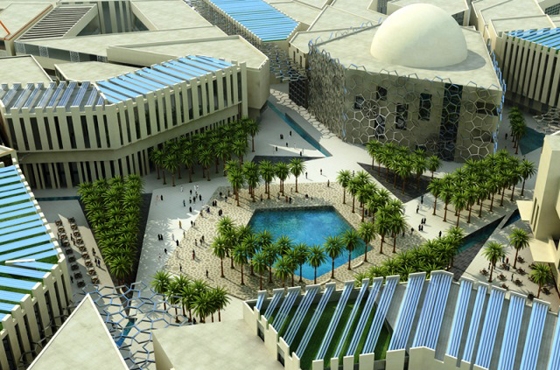The GCC witnessed unparalleled economic and industrial development in the last decades that led to an increase in domestic energy consumption. Forecasts indicate an increase in domestic energy consumption with a growth rate that could reach 6% to 8% annually.
Countries in the GCC have an enormous potential to be more energy efficient. The UAE’s renewable power-generation capacity is the highest among the GCC countries, its solar potential is second only to Saudi Arabia, and solar and wind may now be the cheapest sources of new power in the country.
The Dubai Integrated Energy Strategy 2030 has set the percentage of renewable energy in Dubai's energy mix to 7% by 2020 and 15% by 2030.
Saudi Arabia has plans to attract $109 billion in investment to create a solar industry generating a third of the nation’s electricity – the equivalent of 41 gigawatts – by 2032. Jordan, Turkey and Egypt have also announced new solar initiatives.
Achieving the renewable energy targets of the GCC will result in a 22 per cent reduction in water consumption for power generation and associated fuel extraction, according to a report by the International Renewable Energy Agency (Irena).
1. King Abdullah City of Atomic and Renewable Energy, Saudi Arabia: ($77bn) Construction of 16 nuclear power reactors is planned over the next 20 years.
2. Mohammad Bin Rashid Al Maktoum Solar Park, UAE: ($3.2bn). Once completed in 2030, the 48 sq km park will have a solar capacity of 1GW.
3. Qweira Solar Plant, Jordan: ($150m). The 75MW plant will be installed in Qweira, Aqaba governorate. Jordan is planning on installing 1,800MW worth of renewable energy projects and connecting them to the national grid by 2018.
4. Al-Abdaliya ISCC Project, Kuwait: ($700m) Planned ISCC project at Al-Abdaliya is the largest planned renewable energy project in Kuwait. The scheme was originally proposed to the PTB as part of its unsolicited proposal process by Japan’s Toyota Tsusho.
5. Kom Ombo Solar Plant, Egypt: ($525m) Feasibility studies for 100MW solar power plants in the Kom Ombo region in the province of Aswan have been completed. The project is expected to complete by 2017.
6. Shagaya Renewable Energy Park, Kuwait: Kuwait’s pilot solar project Shagaya concentrated solar plant (CSP) is expected to deliver up to 225,000MWh to the grid every year. Also, Spain’s Elecnor has won a $24m contract to build Kuwait’s first wind farm, which will have a capacity of 10MW, in the park.
7. Gulf of Zeit Wind Farm Project – Stage 2, Egypt: ($460 million) A wind farm with a capacity of 220MW on the Red Sea coast, the project is expected to complete by 2016.
8. 200MW PV Power Plant, Egypt: ($3.5bn) Bahrain’s Terra Sola and Swiss Terra Nex will build 2GW of PV power plants on a build-own-operate-transfer basis across the country. The plan includes the construction of a 200MW PV module manufacturing facility and an inverter fab to be used for the consortium’s own solar plants.
9. EU Clean Energy Projects, Jordan: The European Union (EU) has launched nine renewable energy projects in Jordan, as part of the Renewable Energy and Energy Efficiency Program.
10. Kisr program, Kuwait: The ongoing tender process for Kisr’s pilot solar plants is the first phase of a much larger program that could see the addition of more than 4,000MW of PV and CSP capacity by 2030.
ifpinfo
2 July























































